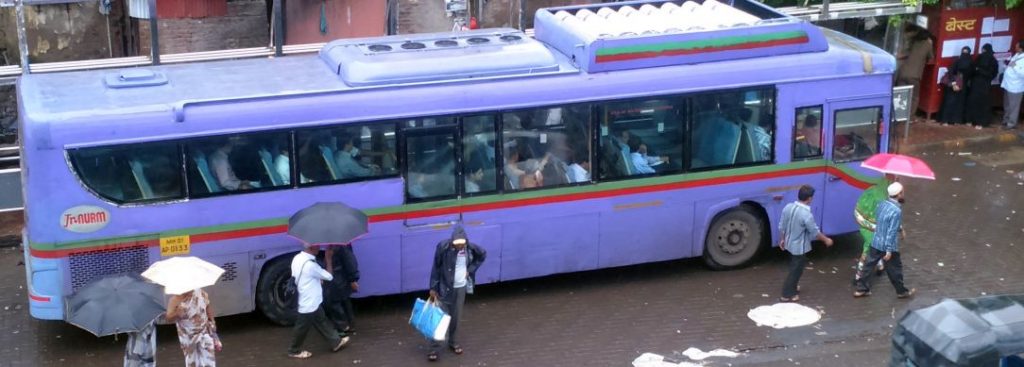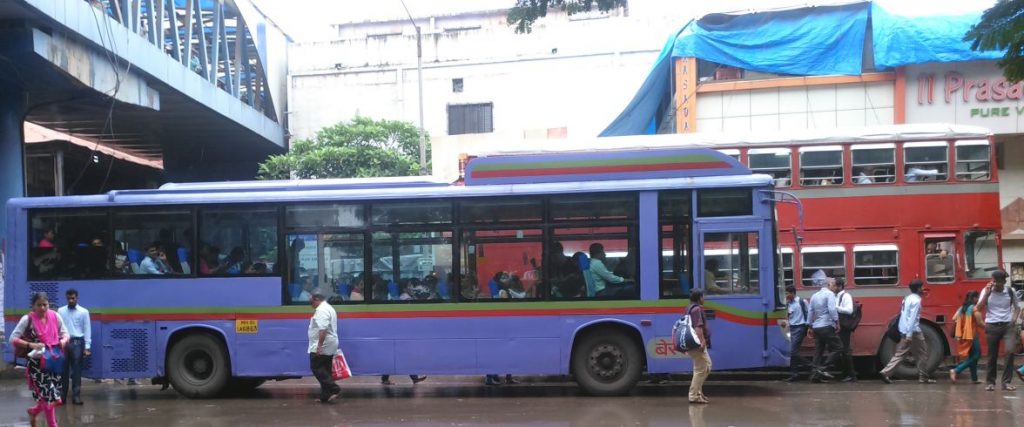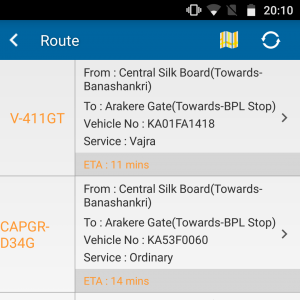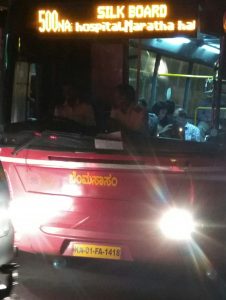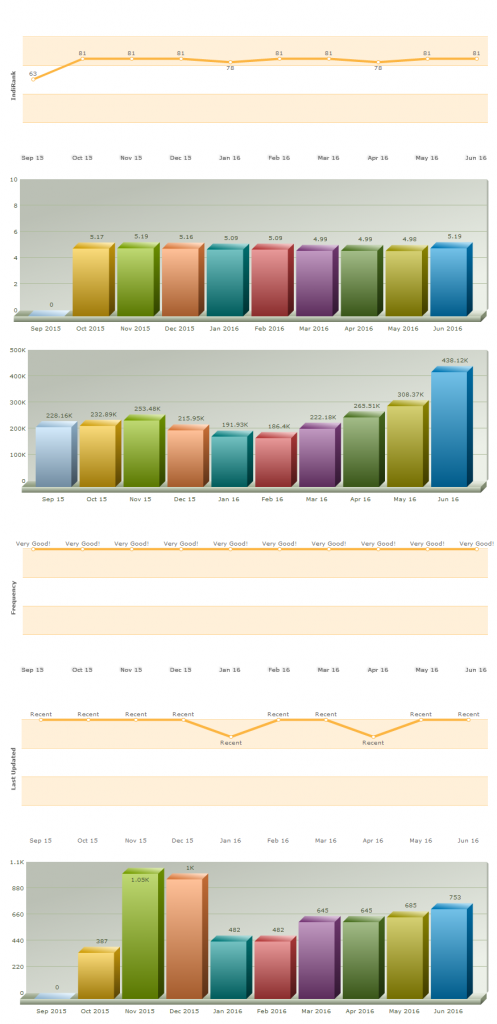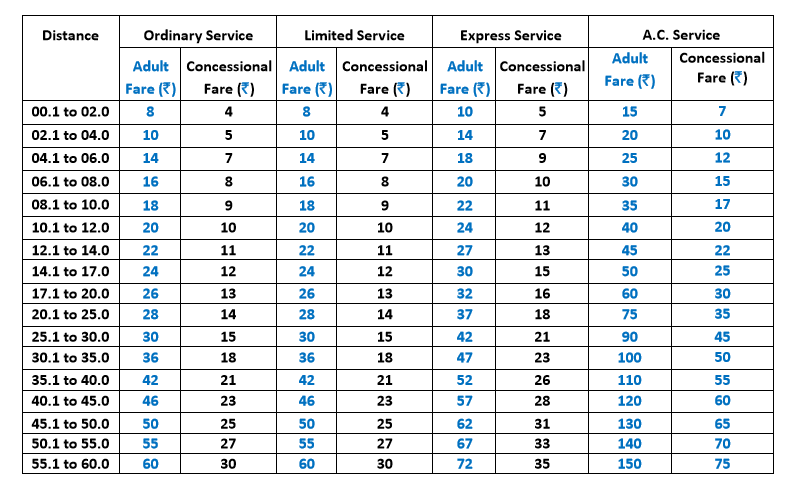Saving the BEST, a wonderful article by Rajendra Aklekar, journalist and author of the highly acclaimed book ‘Halt Station India’, appeared on Sunday’s edition of The Hindu. I’m going to attempt to reinterpret his article with a little bit of my own thoughts in the process.
Mumbai has traditionally been dependent on its railway lines for commuting. This dependency has been justified by their reach, optimal efficiency, and reliability. This makes them more than just a Rail Network. It makes it a lifeline, because it brings together the entire Mumbai Metropolitan Region.
The story with the road is similar. BEST buses have been on the roads for quite a while now. Motor Buses were to make their first appearance in 1913, operated by the Bombay Electricity Supply and Tramways Company Limited [BES &T Co. Ltd] which was set up in 1907, but didn’t turn up till 1926 because of World War I. Prior to this, the Bombay Tramway Company Limited operated horse-drawn trams in Bombay from 1873 with Electric Trams appearing on the scene in 1906 after BES&T took over the BTC. Today, BEST’s ubiquitious red buses form the last mile [or kilometre] connectivity for millions of passengers from both the city itself, as well as its suburbs and satellite towns.
However, things are changing. BEST is already in knee-deep trouble, getting passengers, especially for its lacklusture AC services that have been beaten by NMMT and TMT, although BEST is seemingly gaining a steady foothold after the recent fare revision. Further, app-based aggregators, including Ola, Uber, ZipGo, Shuttl, rBus, are all eating into BESTs revenue. To add to this, the Mumbai Metropolitan Regional Transport Authority [MMRTA] is now allowing private buses to ply point to point within the city without a permit.
The fault here lies in not only the competition, but also BEST. Corruption, Politics, Unions, all have made the Red Bus seemingly irrelevant in today’s life.
To put it in figures, BESTs Transport Deficit is -₹858.02crore. Its Electricity Surplus of ₹925.41crore is what is keeping it floating, along with some cash flowing in from the MCGM.
While it common to understand that Public Transport, being considered Public Service is bound to go thru losses, why are BESTs coffers in such a precarious state?
As Mr. Aklekar puts it, it all has to do with the management of BEST. It has an Administrative Wing and a Committee that is a Political Body. The two often overstep their boundaries, since it is blurred, and cause skirmishes, which leads to losses.
Along with this, it is also BESTs lack of keeping pace. NMMT and TMT went the BMTC way by procuring high-end Volvo buses while BEST remained with their scam-tainted Punjab-made Cerita fleet that were procured under the name of ‘Kinglong’ buses. This, along with the fact that BEST had abysmally high fares for their dilapidated buses just made things worse. BEST’s ITS was a total failure, because it required users to send an SMS and was full of bugs. Later on, it got shut down. Of course, let us not forget BEST’s tryst with Electronic Ticketing, which for a Municipal Level Transco, is a commendable effort, one worthy of a case study.
While BEST doesn’t provide WiFi on buses, something the Mumbai Metro does, I have seen a bus with a White Box behind the Driver saying WiFi. Maybe this was a one-off trial.
While Mr. Aklekar points out that BEST didn’t have a public time-table, I did find out that BEST did indeed have one, visible on its website when searching for a route, and also visible on the Mobile app m-Indicator. Of course, the increased traffic on the city’s roads have practically rendered timetables useless. Last September, the day after Anant Chaturdashi, I ended up catching the 9.30 AS4 from NSCI to Backbay at 10.15 thanks to the traffic.
When Delhi can track its Cluster buses and Autos, why can’t BEST? 3500 buses aren’t hard to track. BEST can set up a system on a Public-Private Partnership and licence its API for others to use if they’re unable to give it out for free.
He also talks of bus stops using electricity for advertising. The power can also be used to light it up for the safety of commuters, as well as a Public Information system for arrivals. I believe this should be easy, atleast within town limits, given that BEST supplies power there. BEST can also explore the possibility of solar powered bus stops.
Why can’t BEST go the Ola-Uber way and tap into the Google Maps API to show where a bus is? Get an app, track buses, guide commuters to the nearest bus stop. Let them buy a ticket with the app! Paper tickets are great. Make them greater. Print some ads on them. BEST used to do so with their earlier punched tickets. Why not now? Print a WiFi password on it as well, so that commuters with a ticket can use it. Passholders can probably have it using an app!
While I had earlier stated that I would be favour of participation from the private sector to keep the city’s transport in shape, the case with BEST is peculiar. The decentralised nature of the Mumbai Metropolitan Region allows each Municipal Corporation to run their own buses. Why can’t BEST, NMMT and TMT coordinate their bus services? Why do they have their toxic competition?
BEST represents the city of Mumbai in many ways. It is a Heritage structure in itself. If not for anything else, BEST, its red buses, their bell pulls, the Double Deckers, makes the Undertaking unique in India. Even the Purple Faeries make them unique.
BEST needs to get its act together. Or else India’s Oldest Transport Body, a crucial part of Mumbai’s Heritage, Culture and History would be lost to the annals of time.
Click here to read Rajendra Aklekar’s article Saving the BEST.
Click here to buy Rajendra Aklekar’s Halt Station India
![]()

![Chandigarh Transport Undertaking [CTU]'s Corona bus on Route 38 at the Mohali terminal of the airport.](https://upload.wikimedia.org/wikipedia/commons/thumb/8/83/CTU-38-Corona-IXC.jpg/640px-CTU-38-Corona-IXC.jpg)

